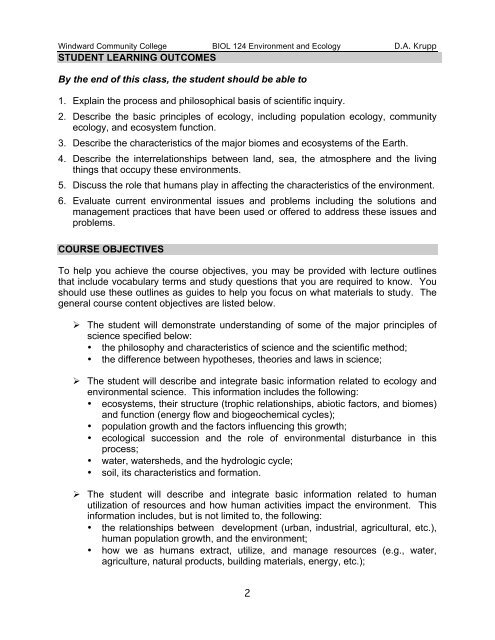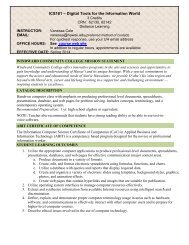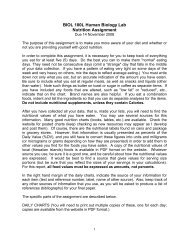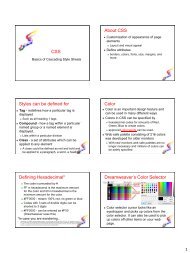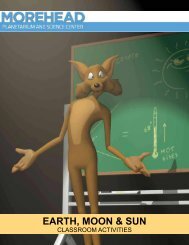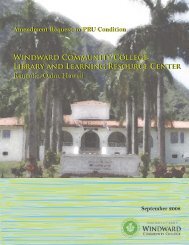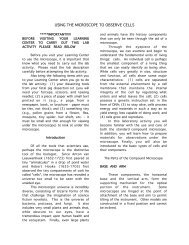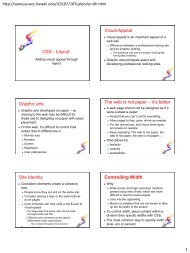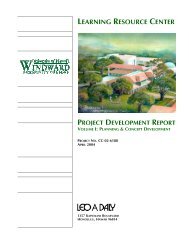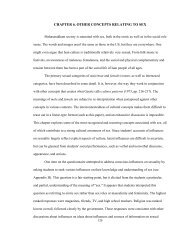Course Outline (pdf)
Course Outline (pdf)
Course Outline (pdf)
You also want an ePaper? Increase the reach of your titles
YUMPU automatically turns print PDFs into web optimized ePapers that Google loves.
Windward Community College BIOL 124 Environment and Ecology D.A. Krupp<br />
STUDENT LEARNING OUTCOMES<br />
By the end of this class, the student should be able to<br />
1. Explain the process and philosophical basis of scientific inquiry.<br />
2. Describe the basic principles of ecology, including population ecology, community<br />
ecology, and ecosystem function.<br />
3. Describe the characteristics of the major biomes and ecosystems of the Earth.<br />
4. Describe the interrelationships between land, sea, the atmosphere and the living<br />
things that occupy these environments.<br />
5. Discuss the role that humans play in affecting the characteristics of the environment.<br />
6. Evaluate current environmental issues and problems including the solutions and<br />
management practices that have been used or offered to address these issues and<br />
problems.<br />
COURSE OBJECTIVES<br />
To help you achieve the course objectives, you may be provided with lecture outlines<br />
that include vocabulary terms and study questions that you are required to know. You<br />
should use these outlines as guides to help you focus on what materials to study. The<br />
general course content objectives are listed below.<br />
Ø The student will demonstrate understanding of some of the major principles of<br />
science specified below:<br />
• the philosophy and characteristics of science and the scientific method;<br />
• the difference between hypotheses, theories and laws in science;<br />
Ø The student will describe and integrate basic information related to ecology and<br />
environmental science. This information includes the following:<br />
• ecosystems, their structure (trophic relationships, abiotic factors, and biomes)<br />
and function (energy flow and biogeochemical cycles);<br />
• population growth and the factors influencing this growth;<br />
• ecological succession and the role of environmental disturbance in this<br />
process;<br />
• water, watersheds, and the hydrologic cycle;<br />
• soil, its characteristics and formation.<br />
Ø The student will describe and integrate basic information related to human<br />
utilization of resources and how human activities impact the environment. This<br />
information includes, but is not limited to, the following:<br />
• the relationships between development (urban, industrial, agricultural, etc.),<br />
human population growth, and the environment;<br />
• how we as humans extract, utilize, and manage resources (e.g., water,<br />
agriculture, natural products, building materials, energy, etc.);<br />
2


